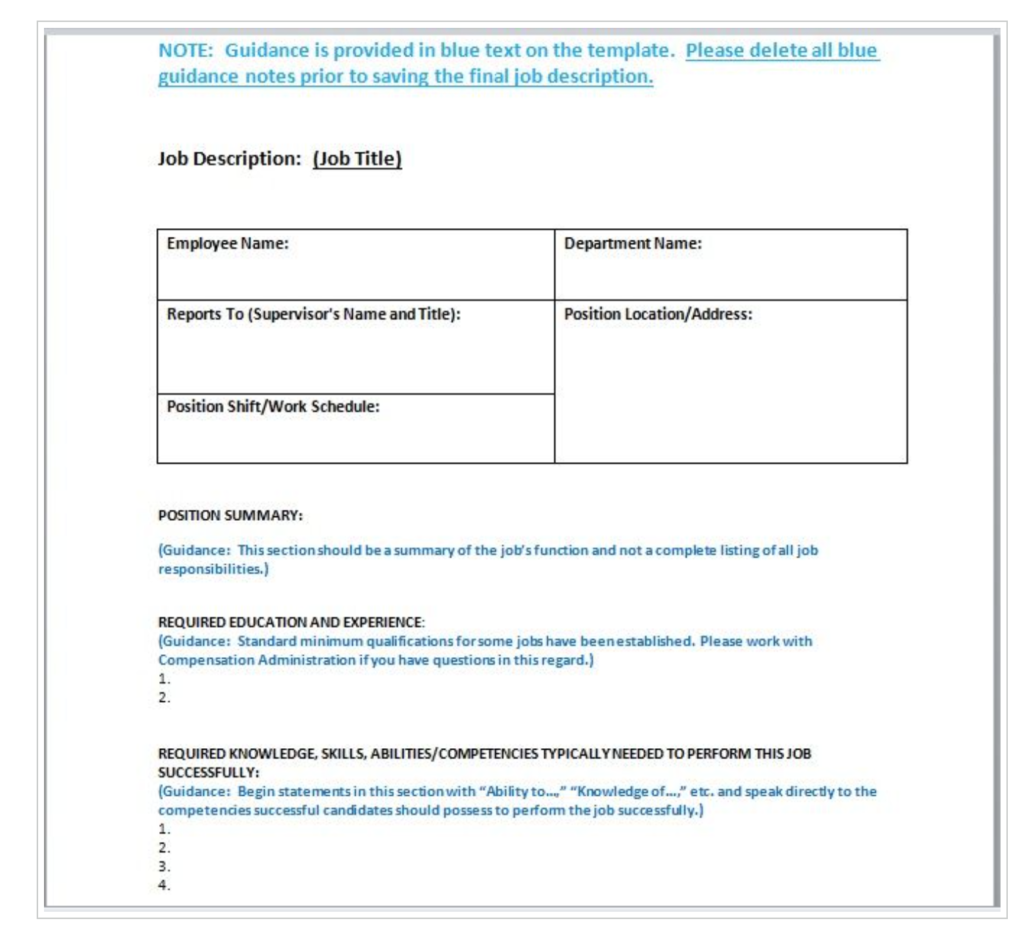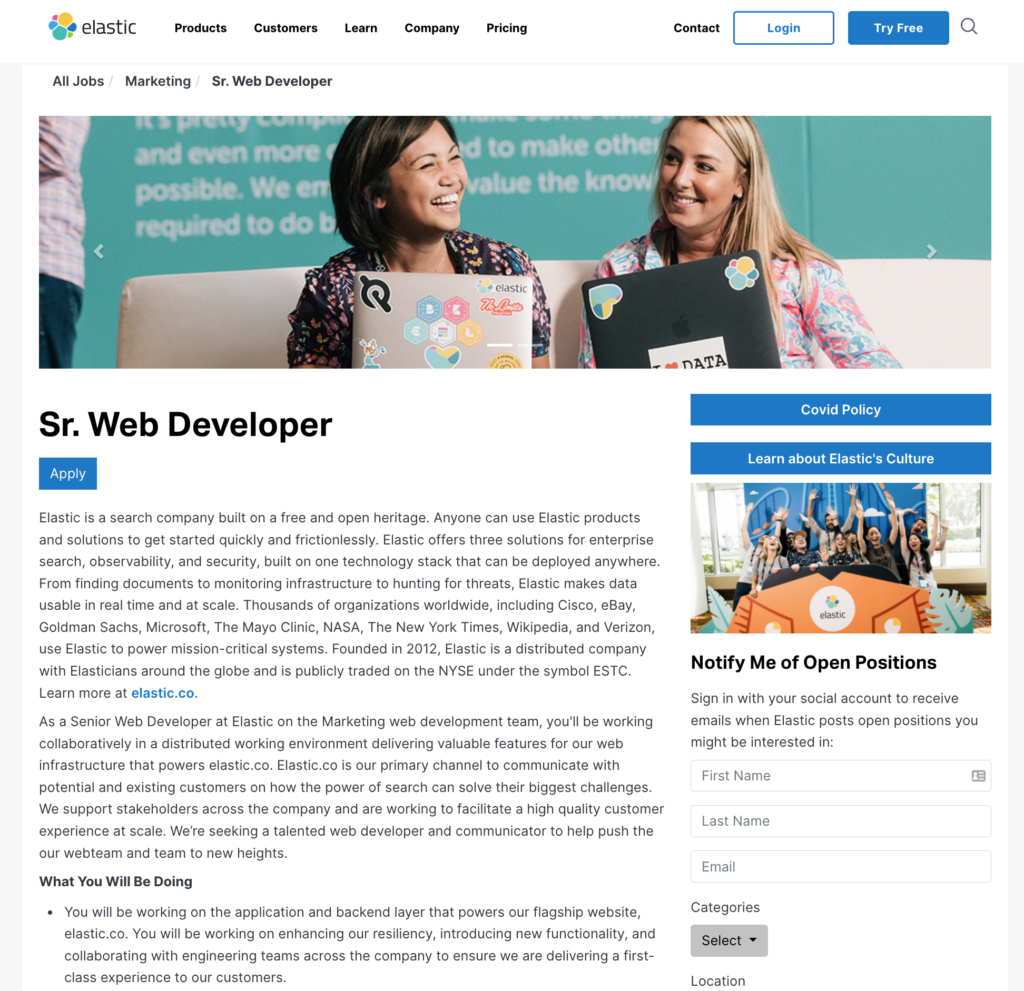- How to Use Microsoft Word’s Readability Feature: 3 Easy Tips - March 14, 2025
- 3 Free Job Description Templates for Google Docs - February 27, 2025
- 10+ Free Job Description Template for Word Examples - January 15, 2025
Job description vs job posting — what’s the difference? Many people use these terms interchangeably. They’re similar, but not the same. Here’s why.
The Definition of a Job Description
A job description is a framework for a job post. It represents all of the responsibilities for a role. When an employee signs a “job description”, it’s a legal document that helps you measure productivity and performance.
The process of writing a JD is usually a collaboration between the hiring manager, recruiter, and compensation team.
Job Posting Definition
A job posting is what you find on job boards or company career sites. It’s a recruiting tool to attract potential candidates. A job post helps candidates answer the question, “Do I want to apply for this job?”.
A recruiter or someone from the Talent Acquisition team usually writes job postings.
The Difference Between “Job Description” and “Job Posting”
Now that we’ve defined both, let’s look at 3 key differences between a job posting vs job description.
1. Explaining Roles vs. Attracting Candidates
A Job description is usually an internal doc. It explains the tasks, duties, salary, and functions of a position. You can think of it as a job manual for you and your new employee. It tells your new hires what you expect of them and how the company will measure their job performance.
The primary purpose of job postings is to attract potential applicants. A job posting is usually found outside the company (unless it’s an internal job posting). They’re an external recruiting tool. You’ll generally post them on job boards and career sites.
2. Creating a Legal Document vs. a Marketing Piece
A job description is a legal document filed away by HR once it’s signed by a hiring manager and an employee. It’s usually in the form of a Word doc or an Excel spreadsheet. It’s organized and focused more on outlining facts, roles, responsibilities, and expectations than anything else.
A job posting is more dynamic. Job postings have images, videos, employee testimonials, and more. Job postings are marketing pieces.
Here’s a side-by-side comparison of a job description vs job posting:


3. Using Company Jargon vs. Engaging Content
A job description is usually a long list of job requirements employees sign. They’re often hard to read. You typically use a formal tone and an academic (or legal) writing style for job descriptions. Sometimes JDs have company jargon or acronyms that might confuse candidates. So, to keep the playing field level, you want to avoid jargon and use engaging language to attract the right candidate.
One example is “KSAs” (knowledge, skills, and abilities):
Required KSAs:
- Three years of people and/or project management experience
- Prior people/project management experience
- Excellent written and verbal communication skills
- Ability to accomplish many complex tasks simultaneously
- Success implementing continuous improvement initiatives
KSAs are a common (and key) piece of job descriptions because this is how employee performance is measured. But, in a job posting, you might switch out “Required KSAs” with “Your Requirements”…to make it sound less like a legal document.
A job posting is engaging because it piques the attention of your target recruits (and sells your job opportunity). So, use words that get applicants excited to apply. Will they get to work with exciting people? What kind of fantastic benefits will they get? What salary will they make? Writing it in second person (“you”) helps too, because you speak directly to the candidate.
Job descriptions and job postings are very similar. But they are not the same. It’s ok to use the terms interchangeably, but make sure not to confuse the documents you’ll use in your hiring process.
Note: Here’s a blog by Ongig’s CEO, Rob Kelly, with even more info on job descriptions vs job postings — What’s The Difference Between a Job Description, Job Posting and Job Ad?
Why I wrote this?
Ongig is on a mission to create effective and inclusive job descriptions (and job postings) so you can attract top talent. Please request a demo for a free JD analysis.
Shout-outs:
- Eight key Differences Between a Job Description and a Job Advert at Webrecruit (by Holly Watson)
- Job descriptions vs. job postings: What’s the difference? (by The Procom Staff)
- The Ideal Work Environment for Millennials (by Alba Garcia Garcia)
- What’s the Difference Between a Job Description, Posting, and Ad (by Katrina Kibben)
- What’s the Difference Between a Job Description and a Job Posting (by the University of Arkansas)
